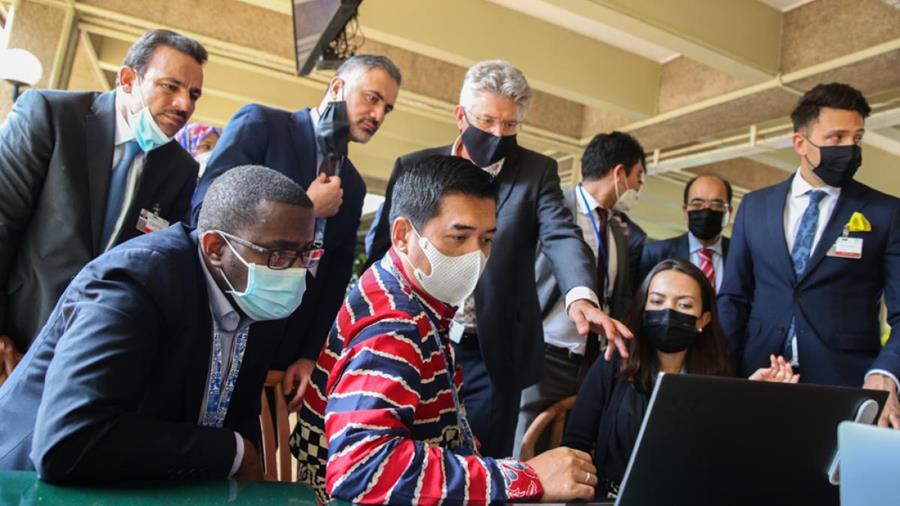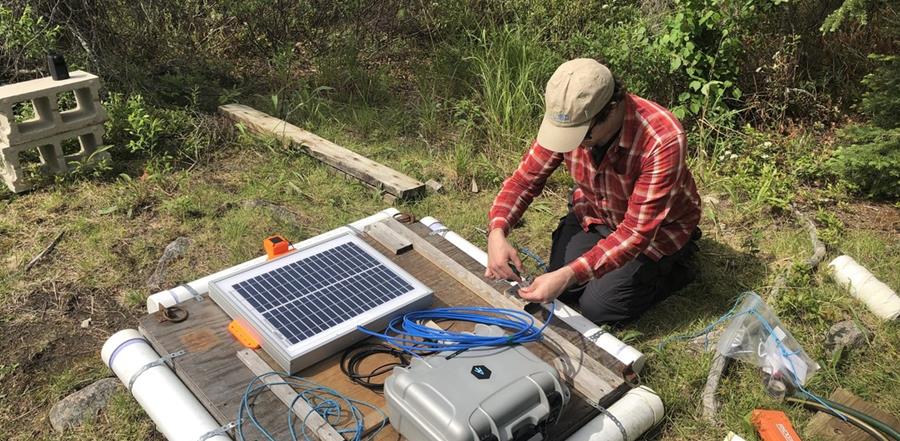UNEA's Role as a Governance Architect
15 March 2022
Once called “the world’s parliament on the environment,” the UN Environment Assembly (UNEA) has a unique role in global environmental governance. It is high-level and universal—the only forum for stakeholders from all countries to discuss the environmental challenges we face.
UNEA is an initiator or catalyst. It starts negotiations for new treaties or bodies, but it doesn’t finish these negotiations. It identifies emerging issues and (hopefully) agrees to the next steps needed to start learning about and addressing these issues.

It is also a coordinator. It oversees the work of the UN Environment Programme. It was created in 2012, during the Rio+20 negotiations, with the objective of strengthening and upgrading UNEP. In less than ten years, UNEA has become a central body to identify, prioritize, and coordinate global responses to environmental issues. UNEA was born into a world already full of environmental treaties and bodies, each with their own mandate. In its initiator and coordinator roles, it has to carefully consider existing mandates and avoid adding to the already overlapping sets of rules. While doing this, UNEA has also emerged as a body that can help clarify where those overlaps lay, as a first step to coordinating environmental governance more widely, beyond UNEP.
UNEA at Work
UNEA negotiations are unlike talks at any other environmental body. Delegates at UNEA meetings do not negotiate new treaties. Instead, country representatives put forward resolutions. Sometimes, multiple countries put forward a resolution on the same issue. These resolutions outline the nature of the problem and potential solutions, as the proponents see it.
Immediately before UNEA, the Open-Ended Committee of Permanent Representatives (OECPR) meets to debate these resolutions. By this time, proponents have often worked together to merge multiple resolutions into one, joint resolution. Negotiators then refine—or rework—the ideas and text in those resolutions.
After OECPR, UNEA convenes. Ideally, the OECPR has forwarded a clean, agreed text. But, there are times when outstanding issues require the attention of higher-level UNEA delegates. UNEA members further discuss these resolutions and the Ministerial Declaration. High-level speeches help to signal common interests and priorities. Finally, the resolutions are (usually) adopted.

Yes, No, or Keep Talking
Some resolutions do not succeed. For example, India and supporters failed to realize a clear call at UNEA-4 to phase out single-use plastics (although the Ministerial Declaration calls for a phase out by 2030). In 2019, Switzerland ultimately withdrew its proposed resolution on geoengineering. There were questions about what technologies count as “geoengineering.” Some countries objected to veering into climate issues, because there are established bodies and rules for reducing emissions and building resilience to climate change. Others argued UNEP should get ahead of the geoengineering experiments and assess the potential benefits and drawbacks of these technologies before they are widely deployed.
Some resolutions are passed and lead directly to implementation actions. This route tends to happen under two scenarios. First, when there are established bodies in place to take up further actions. UNEA identifies additional actions and sends an important signal on the need to do more. The resolution on nitrogen management, for example, highlights the linkages to a range of issues, including climate change, and identifies organizations that could better coordinate, including the Food and Agriculture Organization that is outside UNEP.
Second, when parties struggle to reach agreement on the mandate for further work, a resolution may be adopted that asks the UNEP Executive Director to work with existing institutions or regions to strengthen a response. For example, UNEA-3 struggled with the scope of a resolution on air quality first proposed by Canada and the African Group. Some preferred to discuss regional or even local level impacts of air quality, while others wanted to stress the transboundary and global effects of air pollution. The resolution calls for member states to consider joining regional and global initiatives, and for the UNEP Executive Director to look into how to strengthen these efforts.
Other resolutions trigger a progression of work, particularly when there is a gap in global governance. Marine plastics is a prime example. Since 2014, the issue progressed from identification as a global threat to a proposal to begin negotiations for a global treaty. Since then, the Basel Convention, which regulates the transboundary movement of hazardous wastes, adopted a decision on plastics. Shipments of certain plastics now require the prior informed consent of the importing country. At the same time, there was a growing consensus in the Ad Hoc Open-Ended Expert Working Group on marine litter established by UNEA that a global treaty might be necessary.
The resumed, in-person UNEA-5 meeting will consider establishing negotiations for a marine plastics treaty and will likely hotly debate its scope. The evolution from agreeing that marine plastics pose a global threat to the environment and health to debating if a formal treaty is necessary has not been easy. There was pushback against establishing the Working Group at UNEA-4, and its role was scaled back to a stocktake of existing efforts and consideration of options.

Strengthening Scientific Input
UNEA is tasked with including stakeholders’ access and participation in global environmental governance at the highest levels. Before UNEA meetings, Major Groups and Stakeholders get together to coordinate their responses and input to the issues that will be discussed. The Youth Environment Assembly has become a recurring event organized by youth, for youth.
Among these stakeholders and views, science is singled out in UNEA’s mandate. Science-policy interfaces play a crucial role in environmental governance. They provide timely information, sound the alarm, and assess the effectiveness of current efforts. UNEA is tasked with continuing to strengthen the scientific foundations of environmental action.
UNEA oversees the work of the Global Environmental Outlook (GEO), a report on the state of the global environment that has been produced six times since 1997. The GEO has been multi-issue, unlike the Intergovernmental Panel on Climate Change (IPCC), the Intergovernmental Science-Policy Platform on Biodiversity and Ecosystem Services (IPBES), or the Global Chemicals Outlook. Past GEOs have also sought to build capacity for integrated environmental assessments through providing information on the state, trends, and outlook of the environment. Like the IPCC and IPBES, the GEO-6 Summary for Policymakers was discussed by member states to distill the main messages from the overall report.
The role of GEO, amid all the issue-specific and other scientific outlets, will be discussed at UNEA in 2022. How can the GEO remain the authoritative flagship report of UNEP, while also respecting the vast work undertaken by other science policy interfaces? Again, the congestion of environmental bodies may influence UNEA decisions and the GEO moving forward.
At the same time, some delegates arriving in Nairobi support the resolution calling for establishing a science-policy interface devoted to chemicals issues. This type of an “IPCC for Chemicals” poses interesting questions on the varied roles of science-policy interfaces. Beyond providing expert advice, they also tend to raise awareness of environmental issues—something sorely needed for chemical pollution. But this is an added, unintentional benefit of these bodies. Given the unique characteristics of the chemicals scientific community, the resources required to establish this body, and existing bodies doing similar work, some have questioned whether another venue is truly required.
Coordinating Congestion
By design, UNEA is a body aimed at drawing linkages among issues and efforts. We know more about all the varied multilateral and regional environmental agreements and initiatives than before UNEA. UNEA resolutions often acknowledge the scope of work undertaken across existing agreements.
Working within a crowded space brings challenges. All the existing agreements are the results of carefully crafted and balanced compromises. With equal care, UNEA must adeptly avoid upsetting these negotiated solutions. But it is also a body meant to bring high-level attention to environmental issues and to push for greater ambition. It is a delicate line to walk—to catalyze and coordinate action amid a growing body of global environmental law.
This article was originally distributed in the Earth Negotiations Bulletin Linkages Update enewsletter and was written by Dr. Jennifer Allan and Dr. Lynn Wagner.